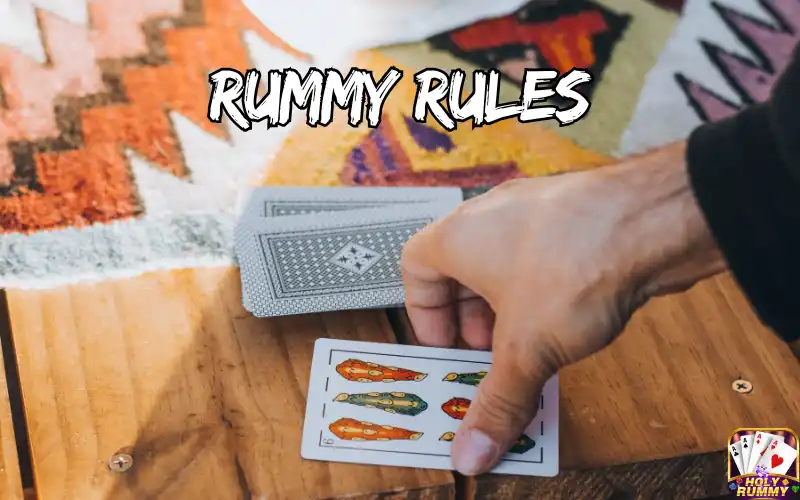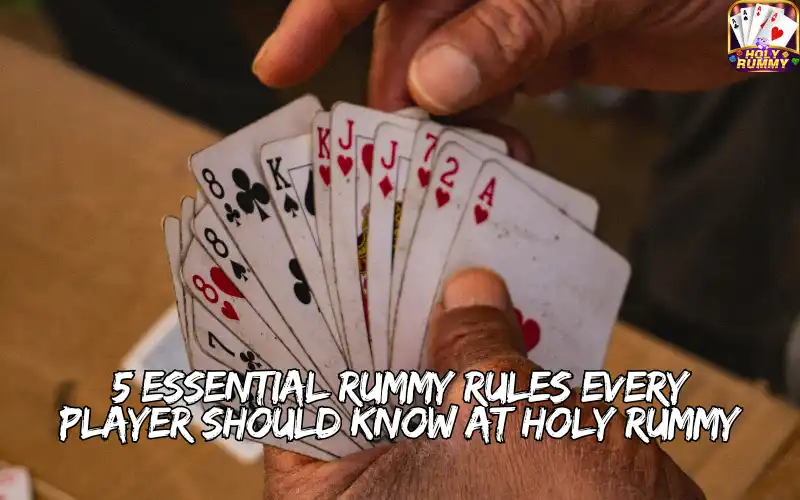Rummy is a popular card game enjoyed by millions around the world. Its blend of skill, Holy Rummy strategy, and a bit of luck makes it a favorite among casual players and serious gamers alike. Whether you’re a beginner or an experienced player, understanding the fundamental rules of rummy is crucial for enhancing your gameplay and increasing your chances of winning. In this article, we will explore five essential rummy rules that every player should know.
1. Understanding the Objective of the Game
The primary objective of rummy is to form valid sets and sequences with the cards in your hand. A set consists of three or four cards of the same rank but different suits, while a sequence consists of three or more consecutive cards of the same suit.
Key Points:
- Sets: For example, three Kings of different suits (King of Hearts, King of Diamonds, King of Clubs) form a valid set.
- Sequences: An example of a sequence would be the 5, 6, and 7 of Spades.
Understanding this objective is crucial as it guides your strategy throughout the game. Players must focus on forming these combinations while also keeping an eye on their opponents’ moves.
2. The Importance of Card Values
In rummy, each card has a specific value that plays a significant role in determining the score at the end of the game. Knowing the card values is essential for making strategic decisions during gameplay.
Card Values:
- Number Cards (2-10): These cards hold their face value. For example, a 5 of any suit is worth 5 points.
- Face Cards (Jack, Queen, King): Each of these cards is worth 10 points.
- Aces: Depending on the variation of rummy being played, Aces can be worth either 1 point or 11 points.
At the end of the game, players who have not formed valid sets or sequences will have their remaining cards counted against them based on these values. Therefore, it’s crucial to minimize the points in your hand if you think the game is nearing its end.
3. The Draw and Discard Mechanism
One of the fundamental rules of rummy is the draw and discard mechanism. This process is essential for managing your hand and forming valid combinations.
How It Works:
- Drawing Cards: At the beginning of your turn, you must draw one card from either the stockpile (the face-down pile) or the discard pile (the face-up pile). This card will help you in forming your sets and sequences.
- Discarding Cards: After drawing, you must discard one card from your hand to the discard pile. This action is crucial as it not only helps you manage your hand but also affects your opponents’ strategies.
Strategy Tip:
Be mindful of what you discard. If you discard a card that your opponent needs, you may inadvertently help them complete their sets or sequences. Always consider the potential impact of your discard on your opponents.
4. The Concept of Melds
Melds are the combinations of cards that players form during the game. Understanding how to create and use melds effectively is vital for success in rummy.

Types of Melds:
- Pure Sequence: A sequence without a Joker. For example, 4, 5, and 6 of Hearts.
- Impure Sequence: A sequence that includes a Joker. For example, 7 of Diamonds, 8 of Diamonds, and a Joker representing the 9 of Diamonds.
- Sets: As mentioned earlier, sets consist of cards of the same rank but different suits.
Importance of Melds:
Players must aim to create melds as quickly as possible. The first player to form all their cards into valid melds and declare “Rummy” wins the game. Therefore, focusing on creating melds should be a primary strategy throughout the game.
5. The Role of Jokers
Jokers play a unique and strategic role in rummy. They can be used as wild cards to substitute for any card, making them incredibly valuable in forming melds.
Using Jokers:
- Substituting Cards: If you have a Joker, you can use it to complete a set or sequence. For example, if you have two 8s of different suits, you can use a Joker to represent the third 8.
- Strategic Discarding: Be cautious when discarding Jokers. If you discard a Joker, you may be giving your opponents a significant advantage, as they can use it to complete their melds.
Strategy Tip:
Try to hold onto your Jokers until you can use them effectively. They can be game-changers, especially in tight situations where you need just one more card to complete your melds.
Conclusion
Understanding the essential rules of rummy is crucial for any player looking to improve their game. By grasping the objective of the game, the importance of card values, the draw and discard mechanism, the concept of melds, and the role of Jokers, you can enhance your gameplay and increase your chances of winning.
Rummy is not just about luck; it requires strategy, observation, and skill. As you become more familiar with these rules, you’ll find yourself making better decisions and enjoying the game even more. So gather your friends, shuffle the cards, and put these essential rummy rules into practice. Happy playing!






